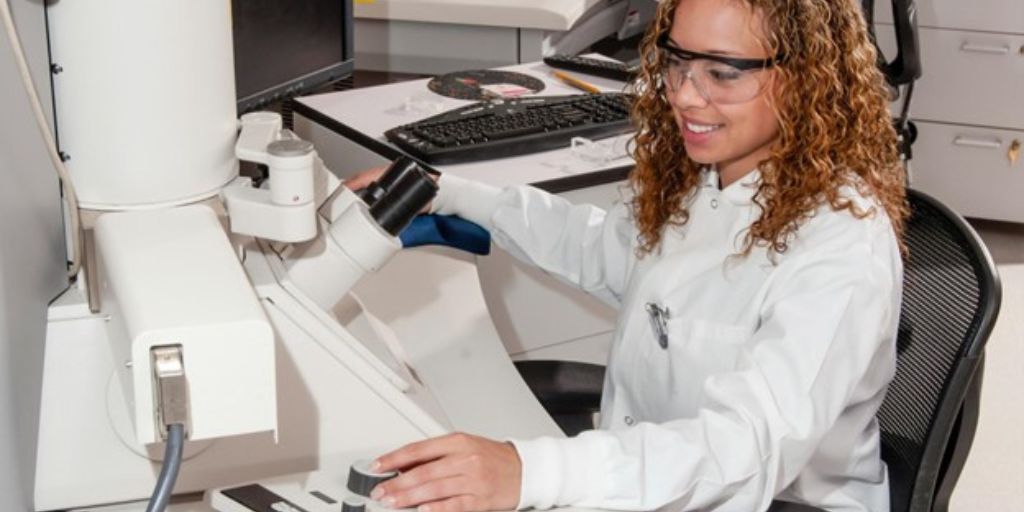
Spatial transcriptomics represents a groundbreaking field that has markedly elevated our comprehension of human tissue architecture. Conventionally, studies on gene expression have offered valuable insights into the molecular foundations of diverse biological processes; however, they have been limited by the absence of spatial context.
Spatial transcriptomics, however, bridges this gap by allowing researchers to analyze gene expression within the context of tissue architecture. This breakthrough technology has opened new avenues for investigating the complexities of human tissues, offering unprecedented insights into cellular interactions and functional relationships.
As of 2022, the assessed worldwide market size for spatial genomics and transcriptomics reached USD 232.5 million. Forecasts suggest an expected compound annual growth rate (CAGR) of 12.2% from 2023 to 2030.
This article will explore the pivotal breakthroughs in spatial transcriptomics and their far-reaching implications for comprehending the complexities of human tissue architecture.
Mapping Gene Expression at Single-Cell Resolution
One of the most significant breakthroughs in spatial transcriptomics is the ability to map gene expression at single-cell resolution within intact tissues. Traditional techniques often required the dissociation of tissues into individual cells, losing the spatial information in the process.
With spatial transcriptomics, researchers can now study gene expression patterns while preserving the spatial relationships between cells. This level of resolution is invaluable for understanding the heterogeneity within tissues, identifying distinct cell types, and deciphering the dynamic cellular interactions that underlie tissue function.
Decoding Spatial Heterogeneity in Tumor Microenvironments
Spatial transcriptomics has proven to be particularly transformative in cancer research, where understanding the complex architecture of tumor microenvironments is crucial. It enables researchers to decode the spatial heterogeneity of gene expression within tumors, providing insights into the interactions between cancer cells, immune cells, and stromal components.
This knowledge is instrumental in unraveling the mechanisms driving tumor progression, immune evasion, and response to therapy. By comprehensively analyzing the spatial organization of gene expression, spatial transcriptomics contributes to the development of targeted and personalized cancer therapies.
Unraveling Developmental Processes in Organogenesis
Another breakthrough lies in the application of spatial transcriptomics to the study of developmental processes during organogenesis. Traditional developmental biology approaches often relied on snapshots of gene expression at specific time points, missing the dynamic spatial context.
Spatial transcriptomics enables the capture of spatiotemporal dynamics in gene expression throughout organ development. This advancement has facilitated a more profound comprehension of the unique contributions different cell types make to the intricate process of forming complex tissues and organs. The insights derived from spatial transcriptomics play a crucial role in unveiling the regulatory networks that govern organ development, with potential implications for fields such as regenerative medicine and tissue engineering.

Investigating Neurological Disorders in the Brain
The utilization of spatial transcriptomics in neuroscience has introduced a groundbreaking instrument for delving into the intricacies of the human brain. Neurological disorders frequently entail complex cellular interactions, and comprehending the spatial organization of gene expression is imperative for deciphering the underlying mechanisms.
Spatial transcriptomics empowers researchers to scrutinize gene expression patterns across various regions of the brain, facilitating a comprehensive exploration of the cell-type-specific contributions to neurological disorders. This innovative technology holds the potential to reveal novel therapeutic targets for conditions like Alzheimer’s disease, Parkinson’s disease, and other neurodegenerative disorders.
Advancing Drug Discovery and Target Identification
Spatial transcriptomics has emerged as a powerful tool in drug discovery by facilitating the identification of novel therapeutic targets and enhancing our understanding of drug responses. Traditional methods of drug target identification often focus on individual genes, neglecting the spatial context of their expression.
Spatial transcriptomics empowers researchers to pinpoint target genes within their spatial relationships, providing a more comprehensive perspective of the molecular landscape. This capability holds the promise of expediting the development of targeted therapies characterized by enhanced efficacy and diminished off-target effects.
Bottom Line
In conclusion, the breakthroughs in spatial transcriptomics have ushered in a new era of understanding human tissue architecture. From mapping gene expression at single-cell resolution to decoding spatial heterogeneity in tumors and unraveling developmental processes, this technology has provided unprecedented insights into the intricacies of biological systems. The application of spatial transcriptomics in neuroscience and drug discovery further underscores its versatility and impact across various scientific domains. As technology continues to advance, spatial transcriptomics holds immense promise for shaping the future of biomedical research and contributing to the development of innovative therapeutic strategies. The integration of spatial and molecular information is proving to be a transformative approach, unlocking the secrets of human tissue architecture and paving the way for groundbreaking discoveries in the realm of biology and medicine.










